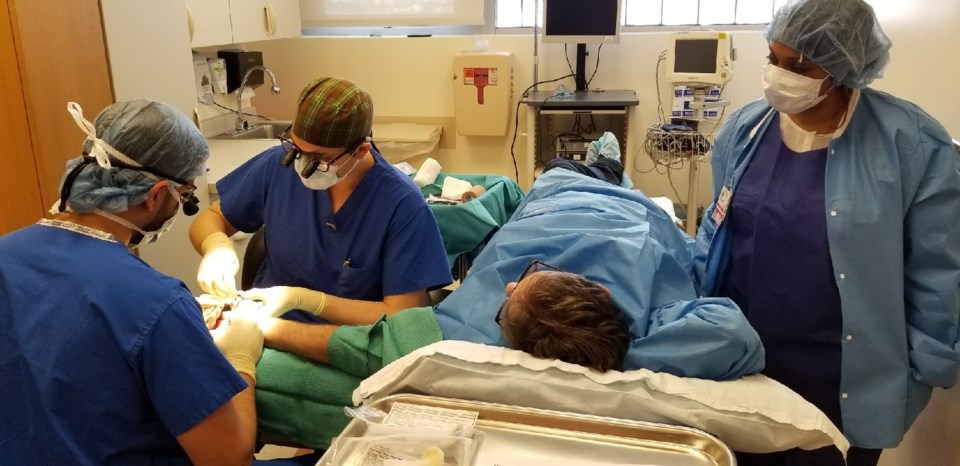The 45-minute surgery doesn't require general anesthesia nor pre-operative procedures such as EKGs or chest X-rays, and is expected to have fewer complications

A Brooklyn surgeon has become one of the first doctors in New York City, and likely the first in Brooklyn, to perform a wide-awake hand surgery. While traditional hand surgeries require general anesthesia and a tourniquet to stem the flow of blood through a vein or artery, a new technique known as WALANT, an acronym for Wide Awake Local Anesthesia No Tournique, requires neither, according to Steven M. Koehler, MD, director of Orthopedic Hand Surgery at NYC Health + Hospitals/Kings County.
"When patients are not sedated during surgery, they are able to receive education and more readily participate in their care," said Dr. Koehler. "With the lack of sedation, their memory is not impaired, and they can leave right after the surgery, without having to recover from sedation or unnecessary opiates. They can ask questions and see a repair—perhaps a return of function—during the surgery. Educating the patient during surgery not only provides better outcomes and fewer complications but is beneficial to the overall patient experience."
This innovative method eliminates the need for pre-operative procedures such as EKGs or chest X-rays, according to Kings County Hospital, and allows Dr. Koehler to perform WALANT surgeries in the hospital's Ambulatory Care Clinic. Patients are awake during the entire process, which lasts approximately 45 minutes from check-in to check-out. They receive an anesthetic injected at the surgical site, epinephrine to stop bleeding and lidocaine to subdue pain — the same medications commonly used in simple dental procedures. As post-operative recovery or monitoring becomes obsolete, patients can leave right after the procedure.
Patients also benefit in other ways from WALANT surgery, explained Kings County Hospital. There are no fasting or changing medication schedules beforehand, which is particularly important to those with diabetes. Because the procedure is quicker, the surgeon can perform more surgeries each day, and there is typically less time to wait for an appointment than for a traditional hand surgery. Most importantly, there are also fewer complications.
The most common conditions for which WALANT surgery is available include carpal tunnel release, follow-up surgeries after amputation, the removal of cysts that develop on the wrist, tendon repairs and transfers, reconstructive repair of wounds and the removal of dead tissue or foreign objects. In some cases, WALANT offers a treatment when traditional surgery is not an option. Kings County Hospital shared a recent example of a woman who needed repairs for cut tendons and nerves in her hand, yet, an open surgery was not a viable solution because the patient was pregnant.
The WALANT surgical technique was developed largely in Canada, led by Canadian hand surgeon Dr. Don Lalonde. In recent years, the procedure has become increasingly popular in England, China and Brazil, among other countries. WALANT was first performed at NYC Health + Hospitals/Kings County on November 3, 2017.




